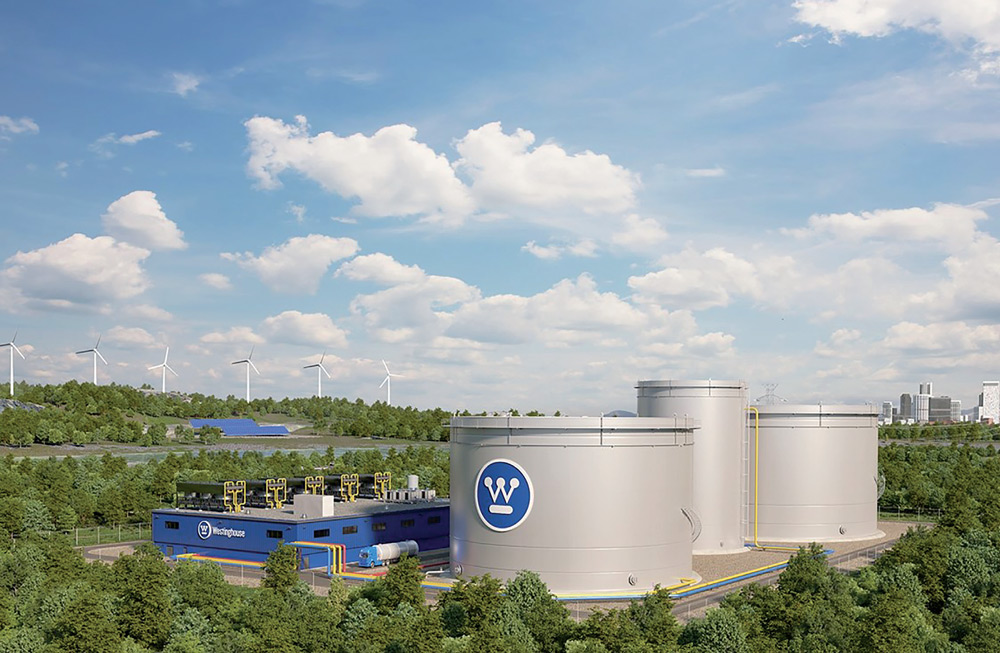
hen most people think of Westinghouse Electric Company, they imagine nuclear energy. That makes sense given that Westinghouse built the world’s first commercial pressurized water reactor in Shippingport, Pennsylvania in 1957. Now, about half of the nuclear reactors operating around the globe employ Westinghouse technology.
However, the company’s legacy of innovation extends back 130 years to when its founder, George Westinghouse, commercialized the alternating current. Today, as the world seeks solutions to evolving environmental challenges, Westinghouse is staunchly committed to developing clean, reliable, safe, economical energy sources.
Recently, Westinghouse launched a major LDES project in Interior Alaska. The company, along with multiple partners, will deploy a 1.2 gigawatthour, utility-scale pumped thermal energy storage (PTES) system in Healy. The technology’s eventual user will be Fairbanks-based Golden Valley Electric Association, which is closing one of the area’s coal-fired power plants and bringing on LDES to pair with wind energy. “It will make that wind firm and dispatchable,” Battaglini says. “This particular case required longer energy duration up to 24 hours, and that’s where our technology is a great fit. It really exemplifies the energy transition.”
With a PTES system, a heat pump draws electricity from the power grid and converts the electricity into heat stored in inexpensive concrete blocks. This stored energy is then converted back into electricity using a heat engine. The system also uses a low-cost, icebased low temperature reservoir. “The major storage components are concrete and water, so there are no mining or rare elements involved,” Battaglini explains. “Plus, the components are fully recyclable.”
Besides being a truly sustainable solution, a PTES system is scalable (simply by adding larger tanks or more tanks), has safe energy storage aspects (concrete and water), and has a longlife asset (50-plus years). Additionally, Battaglini emphasizes: “It will save costs for rate payers. We think it’s a very economical solution for Golden Valley Electric.”
For instance, Nome is pondering the local potential of the eVinci microreactor that Westinghouse is developing and plans to have operational by 2026. The eVinci microreactor applies an innovative approach to traditional heatpipe technology to create a system that is safe and reliable. Essentially a “nuclear battery,” the system has a simple design with almost no moving parts to be maintained. Once installed, it can operate in the harshest conditions for eight years or more at full power without refueling.
Westinghouse’s eVinci microreactor is also designed to be highly transportable; it can be fully assembled in a factory before shipment and delivered anywhere there is a need for clean, reliable power. This makes the microreactor the ideal solution for small communities like Nome as well as off-grid or edge-of-the-grid military installations, mining operations, oil and gas operations, and even universities looking to reduce their carbon footprint.
The eVinci technology also offers significant economic advantages—particularly for remote regions of Alaska, where the rising cost of diesel is a constant struggle. Using the eVinci could lower energy expenses by 10 to 40 percent compared to diesel fuel, according to Michael Valore, Senior Director of Advanced Reactor Commercialization eVinci Technologies at Westinghouse.
“Being part of the eVinci microreactor team is exciting as we transition towards a sustainable, clean energy future.” Valore said. “The eVinci reactor’s innovative design combines new technologies with over 60 years of Westinghouse commercial nuclear and engineering experience. It is a cost-competitive and resilient source of power that provides superior reliability with minimal maintenance and will prove critical to Alaska’s remote communities and remote mining projects.”

With their compact, modularized design, AP300 SMR units can be custom built in the factory to reduce construction time and costs. Like the AP1000 reactor, the AP300 SMR is designed to operate for an 80-hoursplus year life cycle. “We think it’s a great solution for utilities, data centers, oil and gas, chemical manufacturers, and various industrial decarbonization players,” Battaglini said.
Currently, Westinghouse is in the basic design phase with the AP300 SMR. It expects to receive Nuclear Regulatory Certification by 2027 and begin constructing the first unit by the end of the decade. However, the company is already engaging in earlystage discussions with prospective customers in Alaska. Per Battaglini, “We think it could be a really good solution and help solve Alaska’s problem for the next 60 to 80 years.”

John Battaglini, Vice President,
Market Development and Sales (Americas)
John.Battaglini@westinghouse.com
878-250-1648 | westinghousenuclear.com
Mary Ann Pease, Alaska Business Development
maryann.pease@westinghouse.com
(907) 529-9719